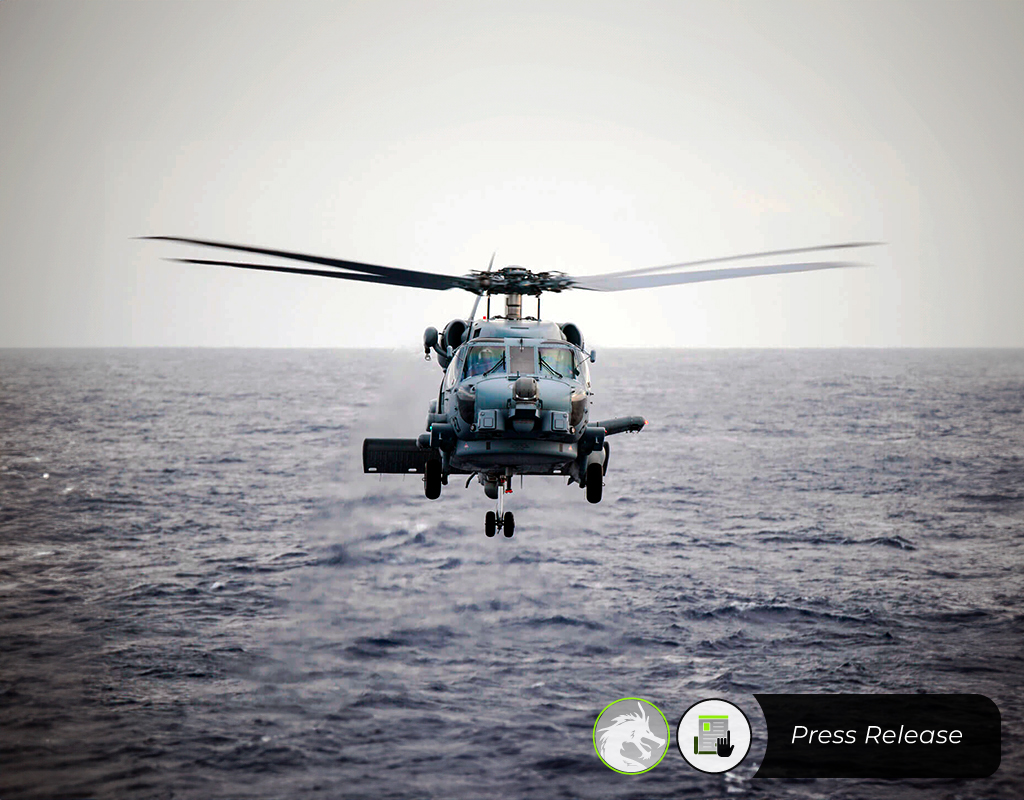
Lockheed Martin will work with Intel Corporation, and Altera, an Intel Company, to support the Stimulating Transition for Advanced Microelectronics Packaging (STAMP) program for the Office of the Under Secretary of Defense for Research and Engineering (OUSD R&E).
Lockheed Martin will develop a low size, weight, and power (SWaP), Sensor Open Systems Architecture (SOSA) aligned airborne electronic defense system, utilizing Altera’s Multi-Chip Package (MCP2) for expected use on the U.S. Navy’s MH-60R multi-mission helicopter.
The project was awarded through the Naval Surface Warfare Center (NSWC) Crane Division Strategic & Spectrum Missions Advanced Resilient Trusted Systems (S2MARTS) Other Transaction Agreement (OTA) vehicle and will be managed by the National Security Technology Accelerator (NSTXL).
“We are excited to work with Intel, Altera, and OUSD to provide a revolutionary leap in defense systems capabilities, utilizing high-performance U.S.-built semiconductors,” said Deon Viergutz, vice president of spectrum convergence at Lockheed Martin.
“In the modern battlespace, against modern threats, this technology will be essential to the evolution of legacy systems and development of new systems that keep service members safe by controlling the electromagnetic spectrum and staying ahead of the threat.”
“The Multi-Chip Package (MCP2) based on Altera’s Agilex 9 SoC FPGA Direct RF-Series is the latest example of how we’re delivering industry-leading products via our chiplet technology,” said John Sotir, senior director, Military Aerospace and Government Business and State-of-the-Art Heterogeneous Integration Packaging (SHIP), Altera.
“Through STAMP andour collaboration with Lockheed Martin we’ve enabled the rapid development of vital defense systems to provide higher bandwidth and performance at low latency, lower power, and in a smaller footprint.”
As a STAMP awardee, Lockheed Martin will advance the progression of technology to enable a defense system that detects and identifies threats with greater speed and accuracy at a significantly reduced SWaP and cost, freeing space for equipment to support other missions.
While initially designed for the Sikorsky MH-60R helicopter, STAMP technology applies to platforms across all domains, including air, land, and sea. Altera’s Agilex 9 SoC FPGA Direct RF-Series enables the defense system by providing advanced digital and analog capabilities while reducing the system’s size, weight, power, and cost by an order of magnitude.
Over the next 18 months, Lockheed Martin will integrate its latest SOSA technology with Altera’s semiconductors with the intent to ultimately implement, test and complete production through the U.S. Navy’s MH-60R helicopter program.
For STAMP, work will be performed at Lockheed Martin’s facility in Owego, New York.

